
A railcar, is a self-propelled railway vehicle designed to transport passengers. The term "railcar" is usually used in reference to a train consisting of a single coach, with a driver's cab at one or both ends. Some railway companies, such as the Great Western, termed such vehicles "railmotors".

The British Rail Class 108 diesel multiple units were built by BR Derby from 1958 to 1961, with a final production quantity of 333 vehicles.
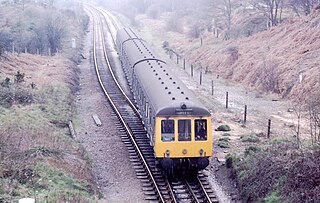
The British Rail Class 116 diesel multiple units were built by BR Derby from 1957 to 1961. Introduced as part of the British Railways Modernisation Plan in the mid 1950s, as with other first generation DMUs the 116 was intended to replace steam trains and reduce costs across the rail network. Alongside Metro-Cammell, BR Derby had prior experience with DMUs, having developed a Lightweight Unit, and so was awarded a contract for a new design.

The British Rail Class 114 diesel multiple units were built by BR Derby from September 1956 to July 1957. Forty-nine 2-car units were built, numbered E50001-49 for driving motors and E56001-49 for driving trailers. The units were used in the early days out of 40A Lincoln TMD (LN) on services all over the county, although a small number were transferred to 41A Sheffield (Darnall) during 1959/60.

British Rail produced a variety of railbuses, both as a means of acquiring new rolling stock cheaply, and to provide economical services on lightly-used lines.

The British Rail Class 104 diesel multiple units were built by Birmingham Railway Carriage and Wagon Company from 1957 to 1959.

The British Rail Classes 101 and 102 diesel mechanical multiple units were built by Metro-Cammell at Washwood Heath in Birmingham, England from 1956 to 1959, following construction of a series of prototype units. These classes proved to be some of the most successful and longest-lived of BR's First Generation DMUs, second in longevity only to the Class 121, with the final five units being withdrawn on 24 December 2003. The oldest set was, by then, just over 47 years old.
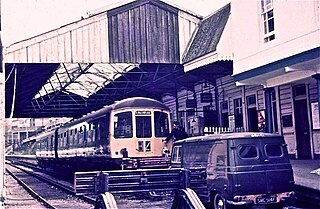
The British Rail Class 103 diesel multiple units were built by Park Royal Vehicles with diesel engines by British United Traction (BUT). Ordered in the first half of 1955, 20 of these sets were built by Park Royal at the Crossley Motors works in Stockport of the ACV Group. They consisted of a power car and a driving trailer. Standard BUT equipment was fitted, with 'A' type engines.

The British Rail Class 117 diesel multiple units (DMUs) were built by Pressed Steel from 1959 to 1961. It was a licence-built variant of the British Rail Class 116.
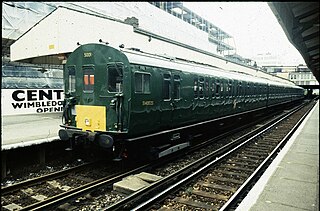
British Rail Class 415 was a suburban 750 V DC third rail electric multiple unit commissioned by the Southern Region of British Railways. Built between 1951 and 1957, it became the most numerous class on the region after the withdrawal of the 4Subs. The final trains were withdrawn in the 1990s, replaced by Class 455, 456, 465 and 466.

The Class 111 DMUs were based on Class 101/2s, but with different engines. The only external body difference was on the final batch of cars where a four character headcode box was fitted above the front cab windows, with the destination indicator on top of a reduced height centre window.
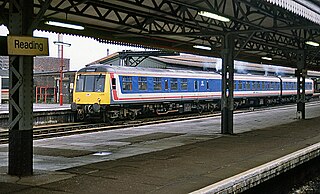
The British Rail Class 119 DMUs were used throughout the Western Region and on services in the Midlands sourced by Tyseley Depot. Built by the Gloucester Railway Carriage & Wagon Co. Ltd, the body design was based on the Swindon Cross-Country sets, but with a Derby cab. Sets were normally formed of three cars.
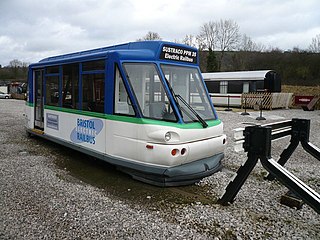
Parry People Movers Ltd. (PPM) is a British company manufacturing lightweight trams and railcars that use flywheel energy storage (FES) to store energy for traction, allowing electric systems to operate without overhead wires or third rails, and railcars fuelled by small gas, diesel or hydrogen engines.
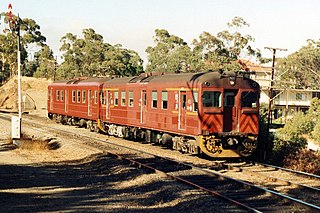
The Redhen railcars were a self-propelled railcar built by the South Australian Railways’ Islington Railway Workshops between 1955 and 1971.

The British Rail Class 124 diesel multiple units were built by BR Swindon Works in 1960.

The NZR RM class Wairarapa railcar was a class of railcars on New Zealand's national rail network. They entered service in 1936 and were classified RM like all other classes of railcars in New Zealand; they came to be known as the "Wairarapa" class as they were designed to operate over the famous Rimutaka Incline to the Wairarapa region on the Wairarapa Line. They also acquired the nickname of "tin hares" in New Zealand railfan jargon. The first two to be introduced re-used the numbers RM 4 and RM 5 that had previously been used by the withdrawn experimental Model T Ford railcars. The class consisted of six passenger railcars and one passenger-freight railcar. It is often described incorrectly as a class of six railcars.

Commonwealth Engineering was an Australian engineering company that designed and built railway locomotives, rolling stock and trams.

Diesel multiple units and railcars are trains, usually with passenger accommodation, that do not require a locomotive. Railcars can be single cars, while in multiple units cars are marshalled together with a driving position either end. As of December 2010, 23 percent of the rail passenger cars used on Network Rail are part of a diesel multiple unit.

A steam railcar is a rail vehicle that does not require a locomotive as it contains its own steam engine. The first steam railcar was an experimental unit designed and built in 1847 by James Samuel and William Bridges Adams. In 1848 they made the Fairfield steam carriage that they sold to the Bristol & Exeter Railway, who used it for two years on a branch line.
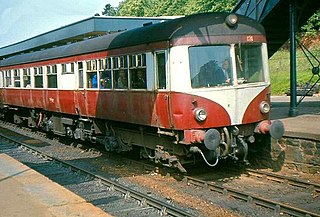
The BUT Class was a fleet of diesel-powered railcars used by the Great Northern Railway Board and its successors. They were an evolution of the earlier AEC railcars, which had entered service in 1951.




















